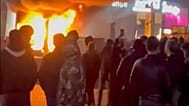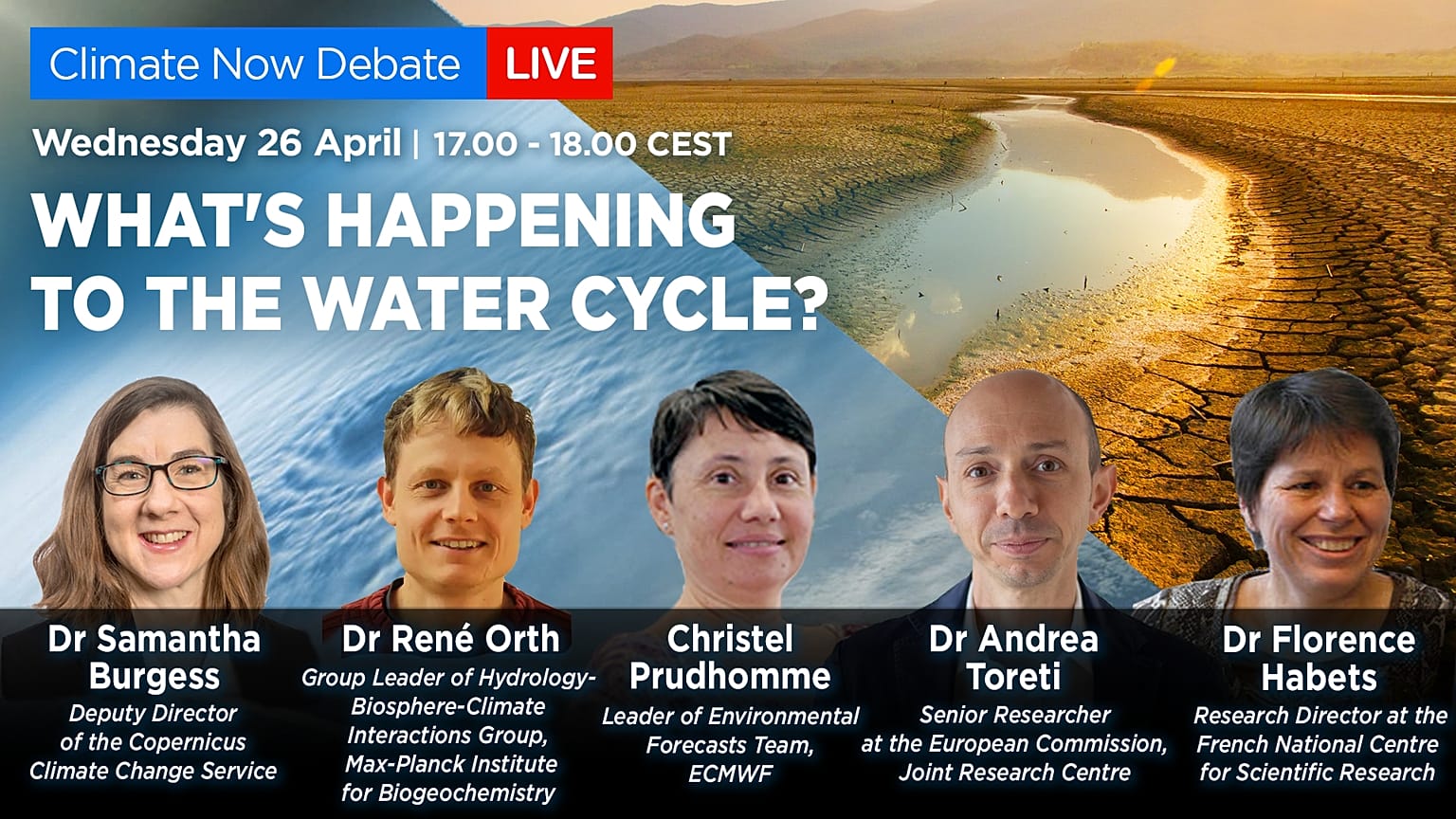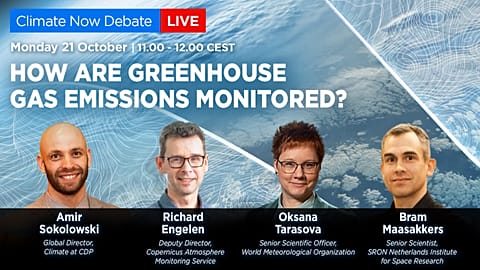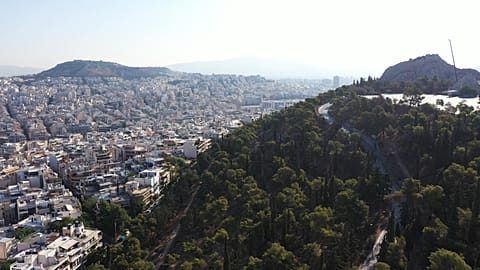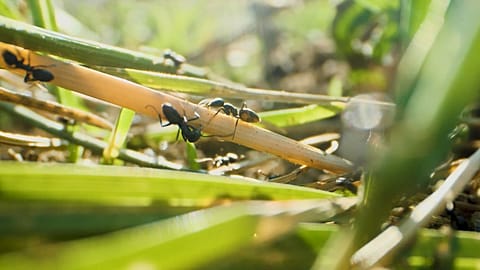Extreme weather events are making water a top priority in Europe. How is climate change affecting the water cycle on the continent?
The impact of climate change on the water cycle is a growing topic of concern in Europe. 2022 was Europe’s hottest summer on record, and with that heat came widespread droughts.
Countries such as Malta have been warned their drinking water supplies could be under threat, while across the continent there are worries about how changes to the water cycle could affect things like agriculture and industrial cooling.
As we experience more extreme weather events, water is becoming a higher priority for everyone in Europe, and it is essential to understand how to respond to this challenge.
Euronews brought together a panel of experts to discuss this pressing topic for a Climate Now debate, which explored the impact on agriculture and industry, and the steps we need to take to mitigate the effects of climate change on the water cycle.
Watch the full debate in the video below:
2022: A year of drought in Europe
In 2022, the global annual average concentrations of carbon dioxide and methane reached the highest levels ever measured by satellite. Europe meanwhile experienced its hottest summer on record, and temperatures across the continent are rising at twice the global average rate. That’s according to the Copernicus Climate Change Service’s annual European State of the Climate report released this week.
The report details the widespread drought that affected Europe last year, explaining how the winter of 2021-2022 saw fewer snow days than average - with some seeing up to 30 fewer. Rain was then below average in the Spring of 2022, with a record low precipitation in Europe for the month of May.
Our debate host Jeremy Wilks started by asking the panel to recount whether they had personally seen changes to the water cycle during their lifetimes. The answers were categorical. Andrea Toreti is a Senior Researcher at the European Commission, Joint Research Centre (JRC), and he said he saw it first hand, as he’s based in northern Italy, one of the regions most affected by last year’s drought.
Dr Florence Habets, Research Director at the French National Centre for Scientific Research (CNRS), noted how France has experienced big droughts in major cities, and also wildfires in Brittany. “It is hard to see how fast it’s arriving,” she said.
For Dr René Orth, Group Leader of Hydrology-Biosphere-Climate Interactions Group at Max-Planck Institute for Biogeochemistry, he sees it in the dryness of his own garden, while he didn’t remember his region of central Germany having to deal with wildfires that now occur.
And Christel Prudhomme, Environmental Forecasts Team Leader of the Evaluation Section, ECMWF, moved from France to the UK 25 years ago - a land much wetter and greyer than what she was used to at the time. “But now Spring starts much earlier, and warm days are very regular,” she said. “It’s a big change”.
How did we end up in this situation?
So what is driving these droughts and changing weather patterns in Europe? The culprit, according to Dr Samantha Burgess, Deputy Director of the Copernicus Climate Change Service, is climate change.
“The reality is Europe is warming faster than anywhere else on the planet,” she explained.
“With those warmer temperatures, it impacts the rainfall patterns, which means through changes in circulation, instead of rain falling where it used to, it is now falling off shore. Yes, we have this natural variability within the patterns, but climate change and warmer temperatures are driving weather patterns to change more rapidly than we’ve seen in the past.”
Andrea Toreti noted that in the last few years Europe has experienced a “really unusual” emerging pattern. “In 2018 in central Europe, the combination of spring and summer temperatures and precipitation conditions was really extreme. What’s extreme is this combination, and the recurrence.”
The only way to prevent increased warming is to mitigate, and stop further emissions of greenhouse gases from entering the atmosphere, said Burgess.
Why heavy rainfall isn’t helping
It was pointed out during the debate that while Europe has clearly experienced hotter and drier weather in many parts, there have still been plenty of heavy rainstorms at times. Why doesn’t this fix the issue after a dry period?
“The gentle rain that’s needed to recharge the landscape is less frequent than it used to be, and we have these intense heavy precipitation events which run off,” said Burgess. “So there’s few intense events, and less of this gentle drizzle than many people who live in Britain used to be intimately familiar with.”
Christel Prudhomme explained that a long drought followed by an outburst of rainfall, does not stop the drought - which has been poorly explained to the public. “The rainfall doesn’t soak through to the soil, the aquifers, it goes very quickly into the rivers, bursts the banks of the rivers - you can’t do anything with the water there - and it ends up in the sea.”
“The drought remains because you didn’t have this recharge, of the water going down into the ground.” Essentially, rainfall needs to be slower and steadier to recharge the soil. If it comes on too hard and too fast, it will run off. That’s why, even though it seems counterintuitive, you can have drought and flood at pretty much the same time, Prudhomme added.
“Floods are consistent with the science of climate change and warmer temperatures. I don’t know how to attribute one event to climate change…but the fact that you’ve got warmer air, more moisture in the atmosphere, you can have the bursts of rainfall that were more typical from southern Europe, and they’re moving up to northern Europe.”
Low snow days
Along with floods and droughts, another clear noticeable change in Europe in the past few years regarding its water has been in the Alps. The winter of 2021-2022 saw less snowy days across the continent, and the Alps have been hit particularly hard by a marked increase in glacier ice mass loss.
“New climate projections state that almost all glaciers in France will disappear by the end of the century,” said Dr Florence Habets. “This was not expected 20 years ago, so it is going very fast, and it will impact the water resources in most of France.”
Asked how France can adapt to this new reality facing it, she made a very sobering point: “The Rhône river, the big one close to the Alps, there are a lot of nuclear plants that need a lot of water. So somehow you need to work out priority for the use of the water. And you need to think differently to mitigate climate change.”
And the drizzle phenomenon was mentioned again in the context of reduced snowfall by Dr René Orth. “We also need to think about snow and glaciers as water storages,” he said.
“If water falls as snow, when the snow melts that resembles a water drizzling event and will be much more efficient for groundwater recharge than if the water falls as rain. Likewise, the glaciers as they melt in summer provide a constant and modest water supply to those Alpine valleys. While when they are shrinking or disappearing totally, this constant and reliable water supply they've had for decades and centuries will be gone, and they’ll need to adapt to that.”
What can we do about it?
How can Europe respond to such a massive and complicated problem? Getting water back into the land and reservoirs is crucial for many reasons, including agriculture. Orth advocated reforestation, as forested land can save water better than bare, or concreted land can. Dr Samantha Burgess agreed, and noted more green spaces in cities would also help.
“The land use has changed and somehow has decreased the possibility for the water to reach the ground,” said Dr Florence Habets. “If you keep some places where water can slowly infiltrate to the soil, some wetlands, let's say, this would be good. For years the wetland has disappeared because we have built on it. Now it’s time to take care of the natural network, and to go back to the natural ability for the environment to store the water.”
And Andrea Toreti called for effective and sustainable plans to be developed with local communities, who have their own specific needs. He also raised the issue of water competition, which is another factor looming over the debate.
“In specific regions of Europe the communities can avoid water competition by developing for instance different agro management strategies when it comes to the use of water.” He highlighted how the rice industry in Europe - a product that traditionally requires constant irrigation to grow - has been discussing how to use water in a different way. This could help to avoid competition with maize producers, who cultivate their product in the same region.
Meet our panelists:
Dr Samantha Burgess, Deputy Director of the Copernicus Climate Change Service
Dr Samantha Burgess is Deputy Director of C3S, the European Union's Copernicus Climate Change Service, working to improve understanding of climate related risks. C3S provides open access to climate data globally to inform better decisions-making. Sam has previously focused on environmental resilience, sustainable finance & ocean governance in roles including chief scientific advisor & head of policy in government, in business, NGOs and academia.
Christel Prudhomme, Environmental Forecasts Team Leader of the Evaluation Section, ECMWF
Christel Prudhomme is a Principal Sectoral Expert leading the Environmental Forecasts team in the Evaluation Section of the European Centre for Medium-Range Weather Forecasts. Her activities focus on the development and operational maintenance and delivery of the Copernicus Emergency Service - Early Warning Systems on floods, the European Flood Awareness System and the Global Flood Awareness Systems. Prior to joining ECMWF in April 2017, Christel worked for over 20 years at the Centre for Ecology and Hydrology, a research institute of the UK National Environmental Research Council.
Andrea Toreti, PhD, Senior Researcher at the European Commission, Joint Research Centre (JRC)
In addition to his work at the JRC, Toreti is the coordinator of the European and global drought observatory of the Copernicus Emergency Management Service. His research focuses on climate extremes, climate variability and climate change, including impacts and adaptation, and he has published more than 70 papers on these topics. He is currently a co-chair of the EU ad-hoc Task Group on water scarcity and drought.
Dr Florence Habets, Research Director at the French National Centre for Scientific Research (CNRS)
Florence Habets is a research director at CNRS and a professor at the Laboratoire de géologie de l’ENS (CNRS/ENS-PSL unit). A hydroclimatologist, she is interested in the evolution of water resources in France, in particular seasonal forecasts of groundwater resources.
Dr René Orth, Group Leader of Hydrology-Biosphere-Climate Interactions Group at Max-Planck Institute for Biogeochemistry
Before joining the Max-Planck Institute for Biogeochemistry, Orth was a postdoctoral researcher at ETH Zurich and Stockholm University. He is interested in land surface hydrology and its interactions with near-surface weather, as well as related extreme events such as droughts, heat waves or floods.




